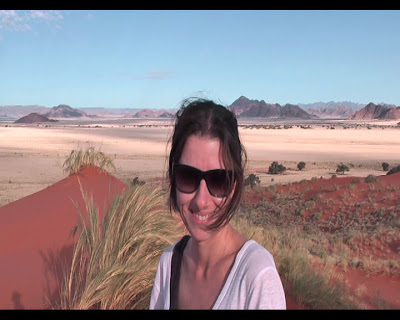Luisa writes:
"With just under two million people it is also one of the least densely populated countries in the world. Most of Namibia is dusty desert. Strong winds have carved out dunes as high as 300m across the Namib Desert.

Red dunes of the Namib desert (photo Scott Driskill)
Namibia is one of those dreamlike places with rugged mountains, never-ending plains, remote deserts, wild seascapes, unique wildlife and a diversity of cultures.



Aunty Betty arrived in Namibia in January 1937. Betty presumably met up in Swakopmund with Joe Frank, who lived and worked there in the late 20’s and 30’s.

Joe Frank at beach front in Swakopmund, November 1930

Swakopmund today: the lighthouse and museum
Swakopmund (German for "Mouth of the Swakop") is a beach resort and one of the major ports in the region.
Often described as being more German than Germany, Swakopmund is an example of German colonial architecture.

A very well kept, quiet and civilized city, it's a sort of German Largs surrounded by sand dunes! For the non-Scottish readership Largs is an affluent seaside town on the west coast of Scotland.

Outside Swakopmund lies the formidable desert coastline - the Skeleton
Coast. Named for the skeletal shipwrecks and whale bones which litter
endless stretches of foggy beaches."

This was a brief visit to the places of interest related to this project during Luisa's holiday. I hope to send her back to Namibia for a dedicated trip to do more project-related research and interviews.

